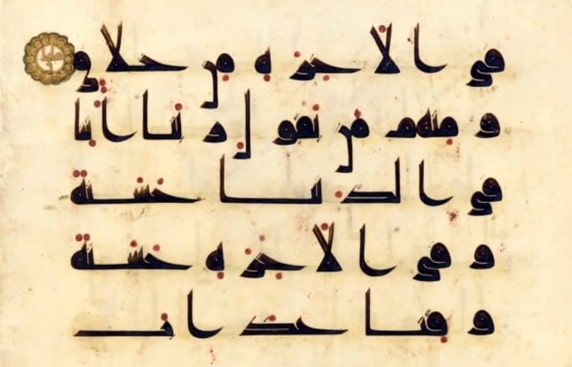Story of Arabic Calligraphy
Writing has been invented by human being for thousands of years ago has invented writing to express ideas. So it can be kept for a long time and shared by generations. Remembering man’s ideas extends life even after death. Writing is a Unique activity that done by human being only rather than other creatures living on the Earth. Writing registers, the human civilization indicates human’s history and development. Throughout such human history Arabic calligraphy has been created, developed by the time and formed in such outstanding beauty, expressing different civilization starts from China borders to Western Africa, the heart of Asia and southern Europe. Scripts have many Styles and types literally such as the races and genders of calligraphers themselves, but scripts are similar in using such kinds of well-known and beautiful curves with valuable meanings.
Inception
Writing has started in two civilizational centers, Mesopotamia (land of rivers) and Nile River, Sumerians have invented a specific type of writing called Sumerian script.
At the same time Egyptians have invented a type of writing called hieroglyphic script. Writing has many phases started with visual symbolic, syllabic styles, and ended with alphabets which replaced with the symbolic representations of sounds and letters. Alphabets had two branches: Musnad alphabet, which spread out in Arabian Peninsula.
Other branch is the Phoenician alphabet which spread out in Levant, Phoenician alphabet also has several scripts including Aramaic script, which branched into Nabataean alphabet. Through the last developed style of Nabataean writing, Arabians have derived their own scripts.
Turning point
Although calligraphy in emerged in Arabian Peninsula, but it has been used only in commercial correspondences. Revelation of the Holy Quran the (first revealed word of the first verse is “read” ) was a turning point in the development of Arabic calligraphy.
As reading and writing are related, Prophet Muhammad (PBUH) has paid special attention to writing, for its importance in spreading knowledge including writing the holy Quran. Prophet Muhammad (PBUH) has urged all members of community including women to learn how to write and read, Prophet Muhammad (PBUH) had calligraphers to right down the revealed Quran and letters to Kings.At the early Islamic era Madani script has been used through three styles; circular, triangle and Ta’am.
Rashidun Caliphs Era (632 -661 AD / 11-41 AH)
Collection of the Holy Quran has substantially impacted on developing writing and drafting relevant rules, consequentially solecism and confusion have led Arabians to add Arabic diacritics (Tashkil ) as known at the Holy Quran, then illustration doting has been emerged, to differentiate between similar letters, till they replaced diacritics with small letters; development speeded with the emergence of calligraphy schools in Kufa, then extended into all areas.
Kufi script name derived from Kufa area. Decoration has been emerged early. It started with Mashq, so letters have become a key element of decoration. Beautiful calligraphies could be seen as decoration for domes, minarets and mosques (worshiping places) as well as palaces.
Abbasid Era (750- 1258 AD / 132- 656 AH.)
In Abbasid era the minister Ibn Muqla has ruled calligraphy developed the rules and standards, the Arabic calligraphy became an art and science with distinctive features, he invented Thuluth script, which gives calligraphy more smoothness and streamline motion, by the end of Abbasid era the number of calligraphies has exceeded 80 scripts, indicating how much Arabic calligraphy technically developed at that time.
Al Andlaus (1492 AD – 711 AH)
Caravan still provide creations and innovations. This caravan is now in Al Andalus, Andalusian has developed Kairouan calligraphy, and then invented calligraphy so-called Andalusian and Al Qirtobi calligraphies.
Ottoman Era. (1923 AD – 1299 AH)
Ottoman era is deemed as the maturation era for Arabic calligraphy, it could be called the Golden Era for Arabic calligraphy, some Caliphs learnt from calligraphers, and knew the rules of Arabic calligraphy through them, with beautiful calligraphies Ottoman mosques and buildings filled, and decorations created by the greatest calligraphers. Other relevant Industries such as papering, illumination and the decoration have been flourished as well.
Modern Era.
Modern calligraphers developed more beautiful dimensions for Arabic calligraphy, so it became graphic art with distinctive features and components, that can be shared between Arabians and Non-Arabians, arts lovers became proud of this art, and for which exhibitions are held all over the world !.
Arabic calligraphy and decorations produced glamorous masterpieces that decorate the Two Holy Mosques, mosques and large gathering rooms and halls. Development story of Arabic calligraphy doesn’t tell only beauty and creation trip, but also tell impressive meaning along with a story civilization and superior spirit.
To get started with calligraphy have a read of this guide on 9mousai.

